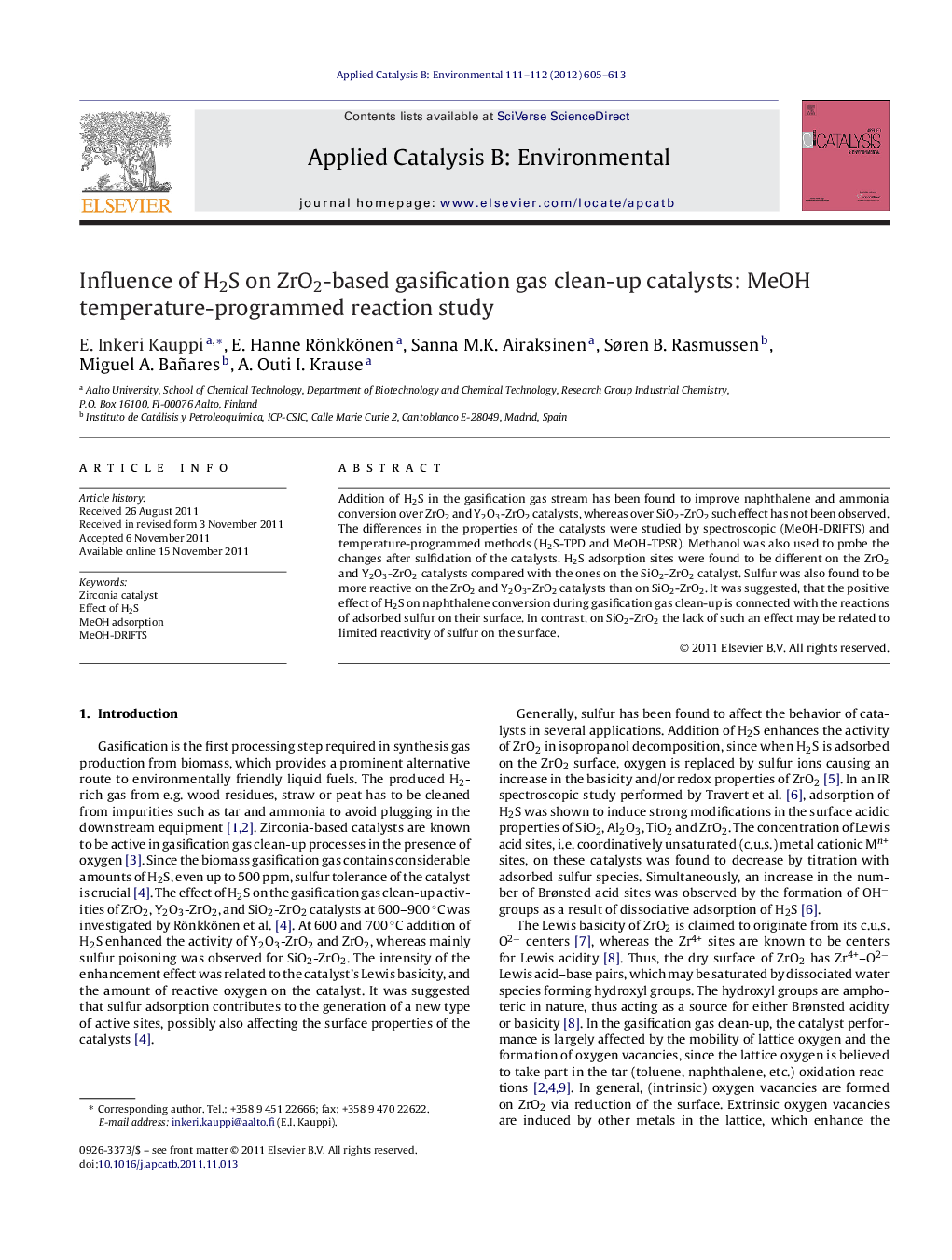| Article ID | Journal | Published Year | Pages | File Type |
|---|---|---|---|---|
| 46512 | Applied Catalysis B: Environmental | 2012 | 9 Pages |
Addition of H2S in the gasification gas stream has been found to improve naphthalene and ammonia conversion over ZrO2 and Y2O3-ZrO2 catalysts, whereas over SiO2-ZrO2 such effect has not been observed. The differences in the properties of the catalysts were studied by spectroscopic (MeOH-DRIFTS) and temperature-programmed methods (H2S-TPD and MeOH-TPSR). Methanol was also used to probe the changes after sulfidation of the catalysts. H2S adsorption sites were found to be different on the ZrO2 and Y2O3-ZrO2 catalysts compared with the ones on the SiO2-ZrO2 catalyst. Sulfur was also found to be more reactive on the ZrO2 and Y2O3-ZrO2 catalysts than on SiO2-ZrO2. It was suggested, that the positive effect of H2S on naphthalene conversion during gasification gas clean-up is connected with the reactions of adsorbed sulfur on their surface. In contrast, on SiO2-ZrO2 the lack of such an effect may be related to limited reactivity of sulfur on the surface.
Graphical abstractFigure optionsDownload full-size imageDownload as PowerPoint slideHighlights► ZrO2-based catalysts are active in tar removal during gasification gas clean-up. ► The effect of H2S on catalyst activity differs for ZrO2 and Y2O3-ZrO2in comparison with SiO2-ZrO2. ► Study by characterization methods using MeOH and H2S probes. ► Adsorption sites for H2S differed for the three studied catalysts. ► Effect of H2Son the activity during gas clean-up was correlated with the reactions of H2S on the surfaces.
